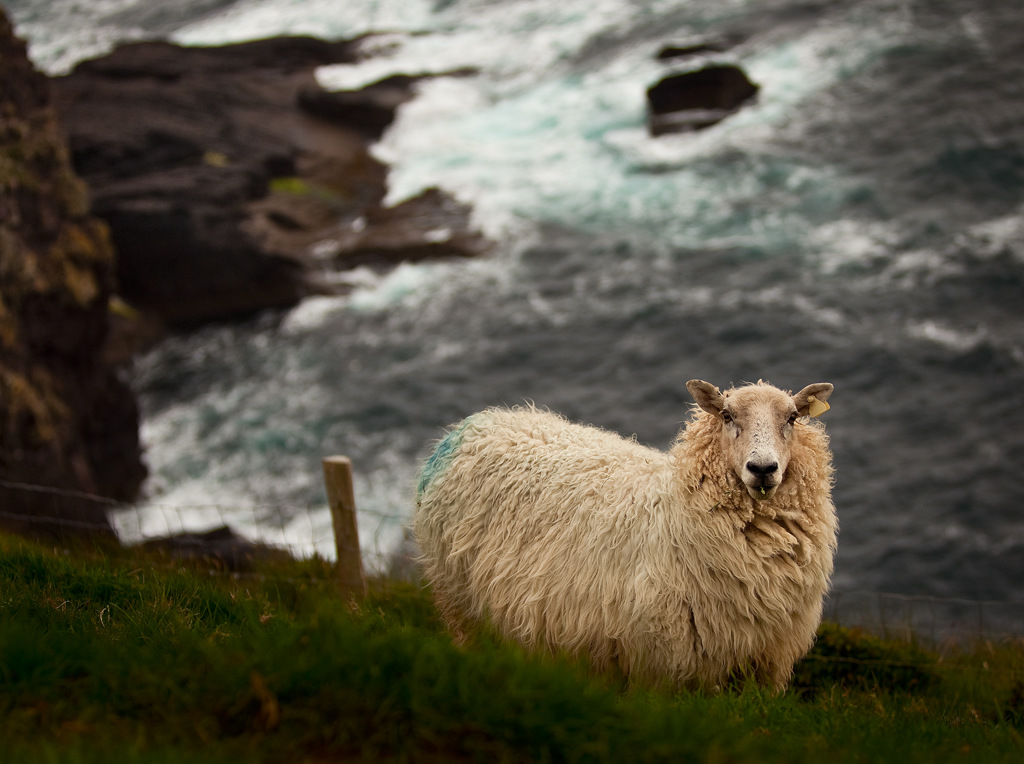
For beginners, perhaps the best way to dramatically improve your photos is to master depth of field.
For example, you can isolate a subject by blurring out the background, which really makes your subject “pop.” Or you can set a wide depth of field to make the whole picture as sharp as possible. There are many possibilities.
So in this article, I am going to show you how to take control of depth of field. First, I’m going to show you what it is. After that, I will walk you through setting your aperture to make the depth of field exactly what you want. Finally I’m going to go through a few other factors besides aperture size on your depth of field.
What is “depth of field”?
The best way to understand this concept is through an example. Before I explain anything about depth of field, I’m going to show you three pictures that show a shallow depth of field, then a moderate depth of field, and then a large or deep depth of field. I have the aperture settings listed as well, so you can also get a preview of where we are headed in the next section.
In each of the pictures below, I focused on the rook (the castle) in the front of the picture. To see the dramatic differences in depth of field, look at the king in the very back of each of the pictures. The only change in each of these pictures was the aperture size (except for offsetting changes in shutter speed, but I was on a tripod so there was no camera-shake problems).
Large Aperture (narrow depth of field)
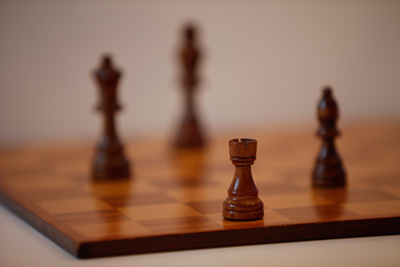 This picture was taken with the Aperture set at f/2.8 (a very large aperture). As you can see, it has an extremely shallow depth of field. Notice how the rook is in focus, but the king is completely blurry.
This picture was taken with the Aperture set at f/2.8 (a very large aperture). As you can see, it has an extremely shallow depth of field. Notice how the rook is in focus, but the king is completely blurry.Medium Aperture (moderate depth of field)
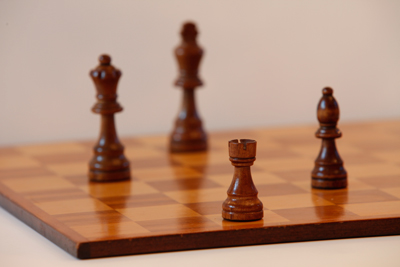
This picture was taken with the Aperture set at f/8. It has a moderate depth of field. Notice how the rook is in focus and the king is somewhat blurry.
Small Aperture (deep depth of field)
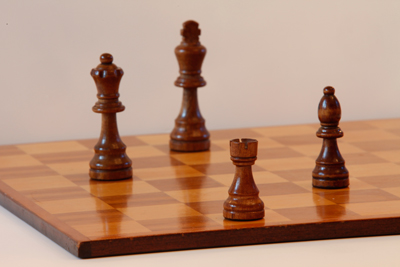 This picture was taken with the Aperture set at f/22 (the smallest aperture for this lens, or most lenses for that matter). It has a wide or deep depth of field. Notice how the rook is in focus and the king is much less blurry than the other photos.
This picture was taken with the Aperture set at f/22 (the smallest aperture for this lens, or most lenses for that matter). It has a wide or deep depth of field. Notice how the rook is in focus and the king is much less blurry than the other photos.Depth of field is just how far in front or in back of the thing you focused on that will be sharp.
When you focus on something, that thing will be in focus and appear sharp. In addition, everything else “on its plane,” meaning everything else the same distance away, as the thing your focused on will also be in focus and sharp. If you focus on something 15 feet away, everything that is 15 feet away will also be in focus. In other words, when you focus your camera on something, there is a narrow slice of space in which everything else is in focus. Depth of field just refers to how much space in front of or behind that plane is also in focus, or at least acceptably sharp. Sometimes that is a large slice, sometimes it is a narrow slice.
A wide aperture results in a shallow depth of field, and a small aperture results in a large depth of field. With a wider aperture, the fall off to “out of focus” is faster, meaning things that are only a little bit behind the subject or in front of the subject are out of focus. Conversely, with a smaller aperture, things stay in focus longer. So, with a smaller aperture, something way in front of our subject or way behind our subject will stay in focus.
This can be confusing, but just remember that a wide aperture results in a shallow depth of field, and a small aperture results in a large depth of field.

What do these aperture settings mean?
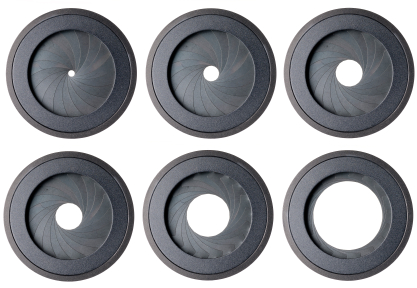
Depth of field is controlled primarily by the aperture size you are using. However, I recall having some trouble getting the hang of the system used to measure aperture size, so I want to go over that a bit.
To me, the system used to reference the size of your aperture is counter-intuitive. You would think that a larger aperture would mean a larger number designation, right? Well, no, it doesn’t work that way. Instead, as the aperture gets larger, the number gets smaller.
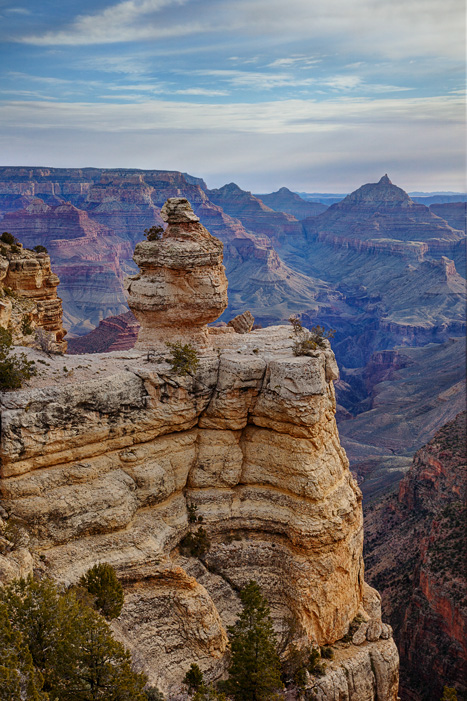
To keep you from suffering from the confusion I had to go through, here is a chart showing you how the relationships work:
[table id=7 /]
Try to get the relationships through your mind before you go out shooting. When you are taking a picture, this will be one of many things going through your head and it may be hard to keep straight at first.
What other factors affect depth of field?
Aperture is not the only setting that controls depth of field, but it is the most important one. Before ending this post, I want to touch on three other factors that affect depth of field a bit.
- Focal length – a larger focal length will give you more shallowness to your depth of field. That is, as you zoom in further on something with your aperture set wide you will get more background blur than if you zoom out.
- Distance (from camera and from each other) – The closer you are to your subject, the shallower the depth of field. Distance also affects things because you will want to put a little distance between your subject and the background if you are trying to blur out that background.\
- Sensor size – larger sensor sizes allow for shallower depths of field. You cannot do anything about this one as you are walking around taking pictures, but I thought I would mention it. If you are struggling to add a shallow depth of field, it may be because of your sensor size. You can read more about this in my post on sensor sizes.
Be sure to consider these factors as well when you are considering the depth of field of your pictures. In particular, if you are using a camera with a smaller sensor size, where you will have difficulty creating a shallow depth of field, try using the focal length and distances to your advantage. Keep in mind that these factors on depth of field pale in comparison to the importance of aperture size. Roughly 80-90% of the size of the depth of field is driven by aperture size.
Where to go from here
Hopefully the explanation above gives you a good understanding of depth of field and aperture. But the best way to master it is to work through it several times. It is easy to do. Just pick up your camera, walk around your house or yard, and take some pictures at different aperture sizes. Specifically, try this:
-
take 3 pictures of the same thing at your lens’s widest aperture, a moderate aperture (f/8), and the smallest aperture.
-
be sure to make offsetting adjustments to your shutter speed or ISO to keep your exposure the same if you are in Manual mode.
-
then just flip through the pictures on your LCD and check out the differences.
You can master this in a day or two. Once you have this figured out, be sure to check out the other articles in this Exposure Series. In particular, be sure to check out the articles on:

